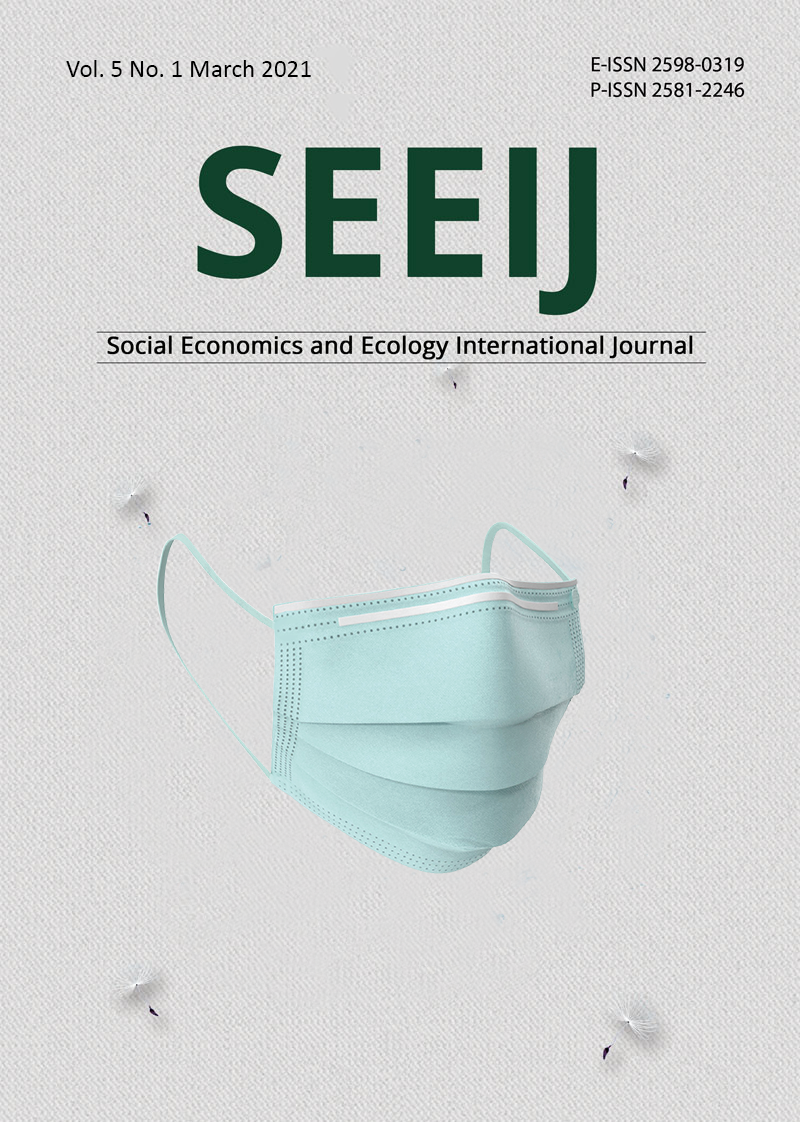Empowering Teacher Engagement in Primary Schools Through Video Intervention Program
DOI:
https://doi.org/10.21512/seeij.v5i1.7366Keywords:
teacher engagement, self-assessmentAbstract
Teacher engagement basically shows that the personal and existence of a qualified teacher is positioned not only as a teacher but as an integrated whole of an educator who is professional and has an Indonesian character. This concept is in line with the mandate of the 2015-2019 RPJMN as stipulated in the Ministry of Research and Technology Strategic Plan where the government seeks to strengthen overall development by emphasizing the development of economic competitive advantages, one of which is based on quality institutions and resources. Based on the results of the trials conducted, it can be concluded that the engagement of elementary school teachers in Jakarta, Bekasi and South Tangerang can be increased through the Video Intervention Program. After empowering teachers through the Video Intervention Program, elementary school teachers in Jakarta, Bekasi and South Tangerang experienced significant engagement at α<0.05. Furthermore, through the results of the self-assessment, it was found that teacher empowerment through the Video Intervention Program will further increase teacher engagement in Jakarta, Bekasi and South Tangerang, if these teachers improve themselves in carrying out religious orders.
References
Beairsto Bruce. (2012). Teacher Engagement is the Key to Student Engagement. Retrieved from https://www.edcan.ca/articles/teacher-engagement-is-the-key-to-student-engagement/
Chung, N. G., & Angeline, T. K. (2010). Does work engagement mediate the relationship between job resources and job performance of employees.
Crawford, E. R. (2018). Job Engagement : Antecedents and Effects on Job Performance JOB ENGAGEMENT : ANTECEDENTS AND EFFECTS ON JOB PERFORMANCE. Academy of Management Journal, 53(February), 617–635. https://doi.org/10.5465/AMJ.2010.51468988
Dimitrov, D. M., & Rumrill, P. D. (2003). Pretest-posttest designs and measurement of change, 20, 159–165.
Dulagil, A. (2012). The relationship of employee engagement and wellbeing to organisational and student outcomes. SBS HDR Student Conference, 1.
Flammer, C., & Luo, J. (2016). CORPORATE SOCIAL RESPONSIBILITY AS AN EMPLOYEE GOVERNANCE TOOL : EVIDENCE FROM A QUASI-EXPERIMENT, (September 2014). https://doi.org/10.1002/smj
Gribbons, B., & Herman, J. (1997). True and Quasi-Experimental Designs True and Quasi-Experimental Designs ., 5(1996), 1996–1997.
Louis, Seashore, K., Smith, & BetsAnn. (1991). RESTRUCTURING, TEACHER ENGAGEMENT AND SCHOOL CULTURE: Perspectives on School Reform and The Improvement of Teacher’s Work. In Office of Educational Research and Improvement (ED), Washington, DC. (Vol. 91, pp. 399–404).
Rabiha, S. G., Sasmoko, & Indrianti, Y. (2019). Implementation of K-Nearest Neighbor for Classification Teacher Engagement Profiling and Interventions. In 2019 International Congress on Applied Information Technology (AIT) (pp. 1–6).
Sasmoko, Doringin, F., Indrianti, Y., Goni, A. M., & Ruliana, P. (2018). Indonesian Teacher Engagement Index (ITEI): An Emerging Concept of Teacher Engagement in Indonesia. IOP Conference Series: Materials Science and Engineering, 306(1). https://doi.org/10.1088/1757-899X/306/1/012119
Sasmoko, Noerlina, Indrianti, Y., Permai, S. D., & Manalu, S. R. (2018). APPLYING INDONESIAN TEACHER ENGAGEMENT INDEX (ITEI) APPS: SELF-DIAGNOSTIC. ICIC International, 9(3).
Suleman, Q. (2012). Comparative Study of the Contemporary and Former Educational Management Systems at Elementary and Secondary Education at District Level in Khyber Pukhtunkhwa ( Pakistan ), 48(48), 28–51.
Suparlan, D., & Ed, M. (2005). Menjadi Guru Efektif. Yogyakarta: Hikayat.
Torrente, P., Salanova, M., Llorens, S., & Schaufeli, W. B. (2012). Teams make it work: How team work engagement mediates between social resources and performance in teams. In Psicothema 2012 (Vol. 24, pp. 106–112). Retrieved from www.psicothema.com
Undang Undang Republik Indonesia No 14 Tahun 2005 tentang Guru dan Dosen. (2005).
Downloads
Published
How to Cite
Issue
Section
License

This work is licensed under a Creative Commons Attribution-NonCommercial 4.0 International License.
The Authors submitting a manuscript do so on the understanding that if accepted for publication, copyright of the article shall be assigned to SEEIJ Community Development Academic (CDA) Bina Nusantara University as publisher of the journal.
Copyright encompasses exclusive rights to reproduce and deliver the article in all form and media, including reprints, photographs, microfilms and any other similar reproductions, as well as translations. The reproduction of any part of this journal, its storage in databases and its transmission by any form or media, such as electronic, electrostatic and mechanical copies, photocopies, recordings, magnetic media, etc., will be allowed only with a written permission from SEEIJ Community Development Academic (CDA) Bina Nusantara University.
SEEIJ Community Development Academic (CDA) Bina Nusantara University, the Editors and the reviewer make every effort to ensure that no wrong or misleading data, opinions or statements be published in the journal. In any way, the contents of the articles and advertisements published in the SEEIJ are sole and exclusive responsibility of their respective authors and advertisers.

This work is licensed under a Creative Commons Attribution-NonCommercial 4.0 International License.









